Introduction
Color plays a pivotal role in workspace design, often overlooked yet significantly impacting mood, productivity, and overall work experience. This article explores the magic of colorful desks, delving into color psychology, its influence on productivity, and how to select the perfect desk for your workspace. We also provide tips on maintaining your vibrant desk and preserving its color and finish. Prepare to transform your workspace and enhance your productivity with the power of color.
The Influence of Color in Workspace Design
Color psychology is a potent tool in workspace design. Specific colors can sway moods and behaviors, thereby affecting productivity and creativity. For example, green and blue are associated with calmness and productivity, while warm colors like red, orange, and yellow can evoke feelings of warmth and comfort or anger and frustration. Strategic use of color in your workspace can significantly impact employees and your company’s overall objectives.
Decoding Color Psychology
Color psychology studies how different colors affect human behavior and mood. It investigates how colors influence our psychological responses and how factors like age and cultural background affect our reactions to color. Today, color psychology is primarily used in marketing, advertising, and workspace design. Office color psychology studies how color affects productivity and boosts employees’ moods. Colors can influence moods and actions, like happiness and improved productivity, in office settings.
The Impact of Colors on Productivity and Mood
Colors significantly influence productivity and mood in the workspace. Research indicates that colors elicit various reactions in the brain, impacting employees' productivity and mood. For instance, natural-toned colors like blue and green improve focus and efficiency, while warm colors like yellow boost energy and inspire creativity. Conversely, bland colors like beige, white, and gray can induce feelings of depression and sadness. Therefore, using a vibrant combination of colors in the office can boost creativity and energy, creating a workplace where people feel energetic and productive.
Selecting the Right Desk: Factors to Consider
Choosing the right desk involves considering your office space layout, budget, and style preferences. The layout determines the size and shape of the desk that can comfortably fit in your workspace. Your budget narrows down the selection, with high-quality desks available across a wide price range. Lastly, your style preference, including color and aesthetics, influences the desk's design. Whether you prefer a traditional or modern look, the desk can be an extension of your work personality and brand. A colorful desk can add vibrancy and energy to your workspace, enhancing productivity and mood.
Material and Durability
When choosing a colorful desk, material and durability are key considerations. Metal desks, while durable, may not offer the style of wood or glass. Wood, including types like oak, pine, and maple, is sturdy and can be painted in various colors. Glass, strong and versatile, can add an airy feel to your workspace. Laminate is a cost-effective option, easy to clean but not as durable as metal or wood. Plastic, although inexpensive and easy to clean, can scratch easily and wear down quickly. For a balance of durability and aesthetics, wood or metal desks are recommended.
Size and Ergonomics
When choosing a colorful desk, ergonomics is a crucial factor to consider. The ideal desk height should be tailored to your stature, with the average desk height being 29 inches tall, suitable for people around 6 feet tall. For optimal comfort, your elbows and underarms should lie straight on the table, forming a 90-110° angle at the elbow. If you're considering a standing desk, the height should be around 38”-42”. Remember, these are just starting points, and you might need to adjust your desk to sit or stand safely and comfortably.
Color and Aesthetics
Desk color significantly impacts your workspace aesthetics, mood, and productivity. Colors like yellow, green, and orange energize, while shades of blue may make people feel less alert. Desk colors should complement the room's décor, creating a balanced and comfortable space. Understanding color psychology is crucial when choosing a desk color. For instance, red represents strength and excitement, green creates a sense of balance, grey is neutral and modern, brown signifies expertise, and white gives a professional look. However, an overly monotonous environment can lead to distractions and errors.
Incorporating Colorful Desks into Your Workspace
Implementing colorful desks into your workspace can significantly influence the mood and productivity. For instance, reds and oranges can create an energetic environment, while yellows can evoke happiness and raise self-esteem. Blues and greens, on the other hand, can have a calming effect on a stressful work environment. However, it's crucial to use these colors sparingly and balance them with more muted shades to avoid visual fatigue. Also, consider the contrast between the desk color and other elements in the workspace.
Colorful Desk Ideas and Inspiration
Looking for inspiration to revamp your workspace with a colorful desk? Consider a lilac or sage desk to brighten up your workspace. Or, you might want to try a DIY project like a colorful epoxy-topped desk, which not only adds color but also a personal touch to your workspace. If you're into retro style, a groovy retro desk could be your pick. For a more sophisticated look, a mid-century desk in kelly green and coral could be an excellent choice. Remember, a colorful desk can transform your workspace into a vibrant and energizing environment.
Balancing Color with Other Workspace Elements
Color balance plays a crucial role in creating an optimal workspace environment. The right colors can significantly impact your mood and productivity. For instance, blue promotes focus, while green reduces eye strain. When implementing colorful desks into your workspace, consider the primary colors and their effects on your productivity and mood. Use color accents to add visual interest and create a dynamic environment. Remember, the goal is to achieve a visual harmony that fosters productivity and well-being.
Maintaining and Cleaning Your Colorful Desk
Maintaining a clean and vibrant workspace is crucial, especially when you have a colorful desk. Regular cleaning ensures that your setup remains appealing and the colors stay vibrant. Consider using appropriate cleaning agents that won't harm the color or finish of your desk. Additionally, it's important to prevent scratches that could ruin the aesthetics of your desk. A desk pad can be a useful accessory in this regard, providing a protective layer between your desk and your peripherals. Remember, a well-maintained colorful desk can inspire creativity and productivity.
Regular Cleaning Tips
Maintaining a clean workspace is crucial, especially when it comes to colorful desks. To prevent the spread of germs, it's important to clean your desk and office accessories regularly. This includes your keyboard, mouse, screen, and desk phone. Regular cleaning not only ensures a hygienic workspace but also helps in preserving the vibrant colors and finish of your desk. Remember, a clean and colorful desk can significantly enhance your productivity and mood.
Preserving the Color and Finish
Preserving the color and finish of your colorful desk is crucial to maintain its vibrant appeal. One way to do this is by using a varnish that doesn't alter the color of the wood. A product like a dead flat varnish can be an excellent choice as it locks in the color without adding shine. However, for high-traffic areas like a kitchen table, you might want to add an extra layer of protection with an oil-based polyurethane. This won't darken the wood once it's sealed with the varnish, and it's easier to clean due to its sheen.
Conclusion
In conclusion, the strategic use of color in your workspace, particularly in the choice of desk color, can significantly impact mood, productivity, and creativity. Understanding color psychology and considering factors such as material, durability, size, and ergonomics can help you choose the perfect colorful desk. Implementing these desks into your workspace can create a vibrant and energizing environment, while regular maintenance and cleaning can preserve their appeal. So, don't underestimate the power of color. Embrace the magic of colorful desks and transform your workspace into a hub of creativity and productivity.
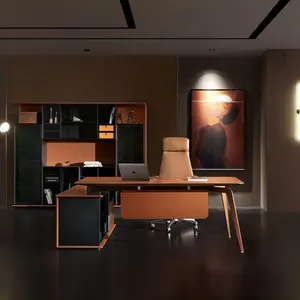


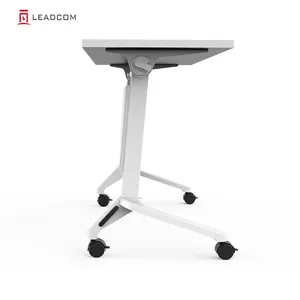












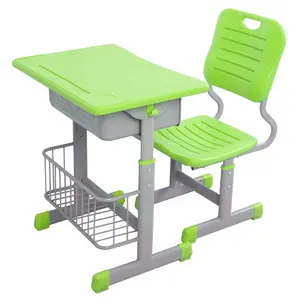




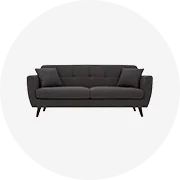
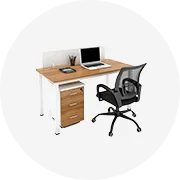




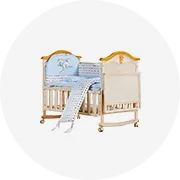








 浙公网安备 33010002000092号
浙公网安备 33010002000092号 浙B2-20120091-4
浙B2-20120091-4